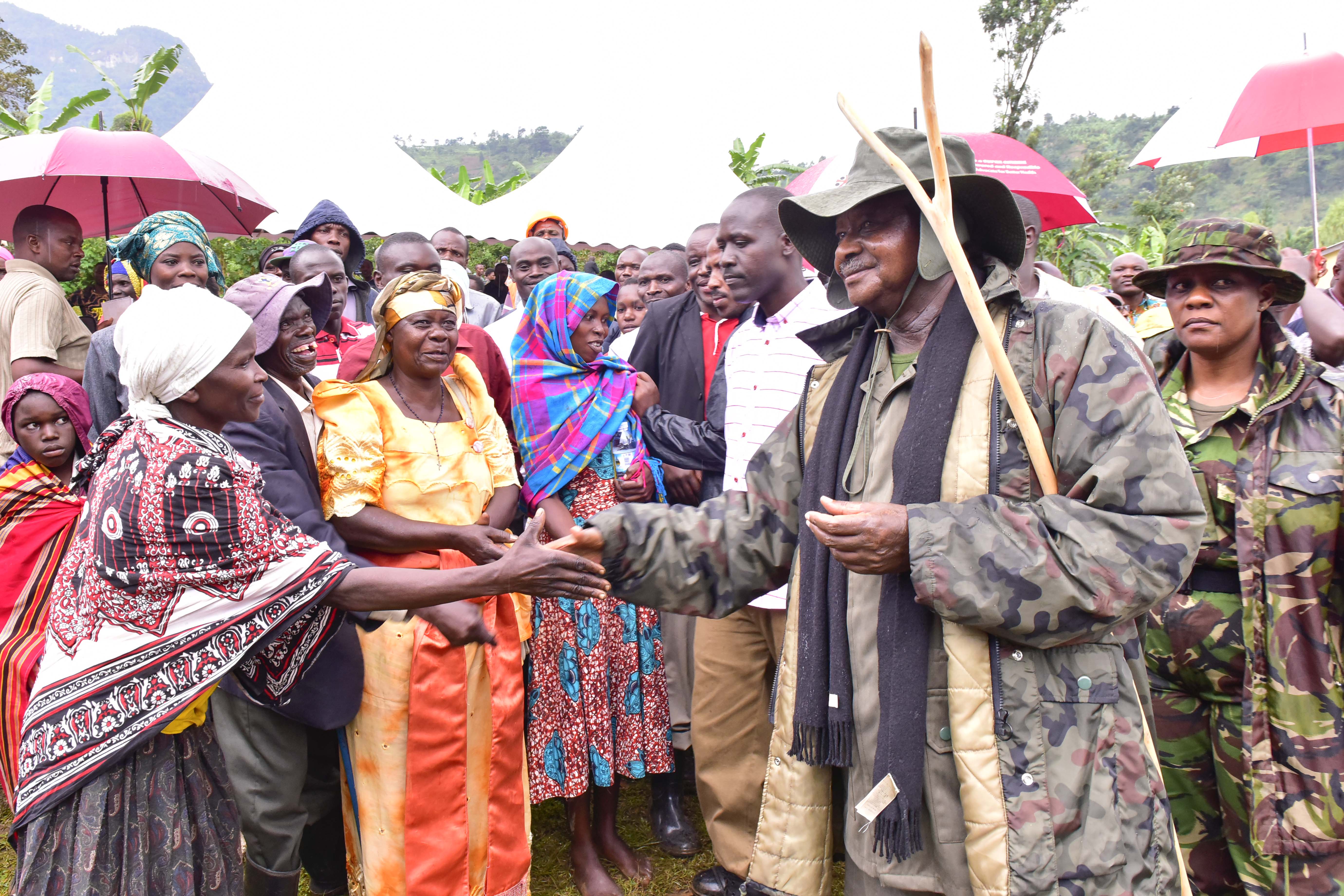President Yoweri Museveni has expressed condolences to the families of the nine Ugandans that died in the Elgon area and the seventeen Ugandans that died in the Rwenzori area and to all Ugandans as a whole, urging those in risky areas to embrace government plans to relocate them as soon as possible.
Full statement
To all Ugandans.
This is to express condolences to the families of the nine Ugandans that died in the Elgon area and the seventeen Ugandans that died in the Rwenzori area. Condolences also to all Ugandans as a whole. These losses, on account of floods and landslides, are, mainly, due to the mistake of insisting on settling (living) in areas that logic and God did not intend for human habitation. These are the wetlands (ebisaaru, entobazi, emigga, mbalama, emyegyego yennyanja swamps, wetlands, river-banks and lake shores) and steep mountains of 31-32% gradient or more than that. All people in such areas should accept resettlement as we have done with the previous Bududa victims that are now settled in Bulambuli. Those cultivating in the wetlands since the 1960s should accept our plan of changing to fish-farming as we have done in Limoto wetland, Pallisa District. You can have fish ponds on the edges (emiiga) of the swamps but not in the centre of the swamp. In order to expedite the evacuation of threatened People, we may have to look at only cash compensation instead of the protracted process of resettlement which involves the allocation of planned farms, permanent houses etc.
With cash, People can, then, go and fend for themselves. The swamps and steep mountains are not for crops and human settlement (amaka). The swamps are for water, ebigugu (cyperus latifolia) and papyrus (cyperus papyrus). Undisturbed swamp water is for irrigation and the swamp grasses are for mulching (okwarira) crops. The swamp grass also helps in the manufacture of rain through transpiration (sucking water from the wetland and putting it in the atmosphere to make rain). You normally see mist (oruho) along these swamps early in the morning. That is part of that transpiration that, eventually, helps with rain formation. The swamp grass also filters the water of soil and impurities and, therefore, protects the Lakes from silting filling with soil. Forests and vegetation along steep mountains use their roots to hold the soil and also act as cushion for raindrops (amakaanda) hitting the soil so that rain and the run-off water (omutuunga, omukoka, alele) does not sweep the soil, causing soil erosion and, eventually, landslides. The tree-leaves and canopy also break the force of the raindrops. The tree-roots and the dropping leaves, also form a soft bed on the forest floor and slows down the speed of mutuunga (run-off water) and forces the water to sink in the soil, thereby replenishing the water-table underground. Instead of water running on the surface and causing destruction, it sinks in the soil.
I will intensify the campaign for the Environment Resettlement fund so that those who were misled by the Government to go to the wetlands in the 1960s are compensated to get out. The recent encroachers should simply get out. Condolences, again.




